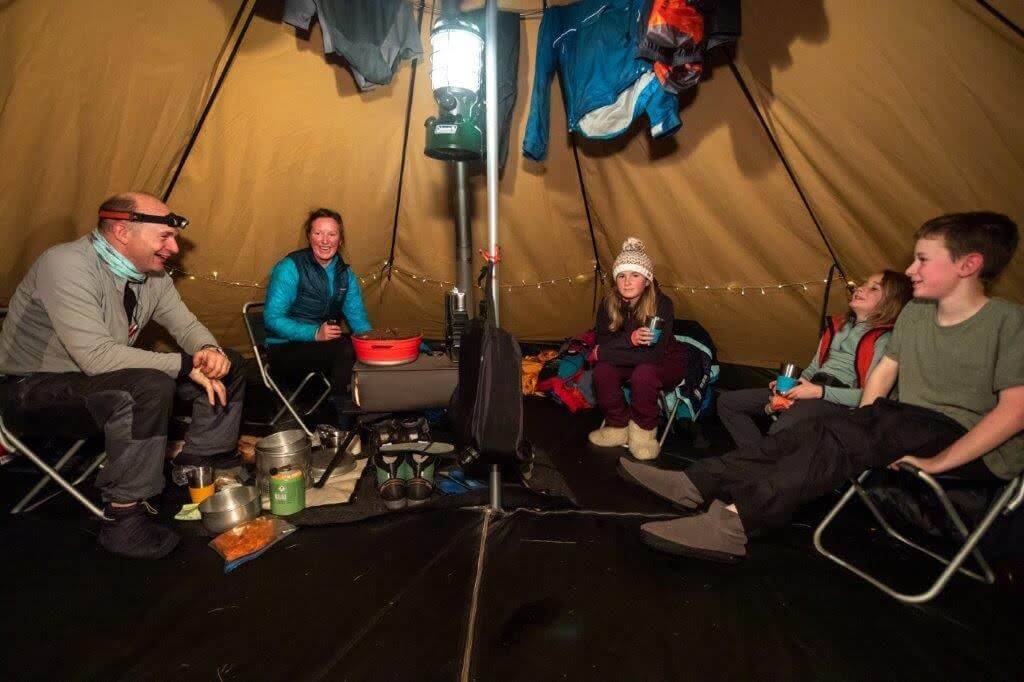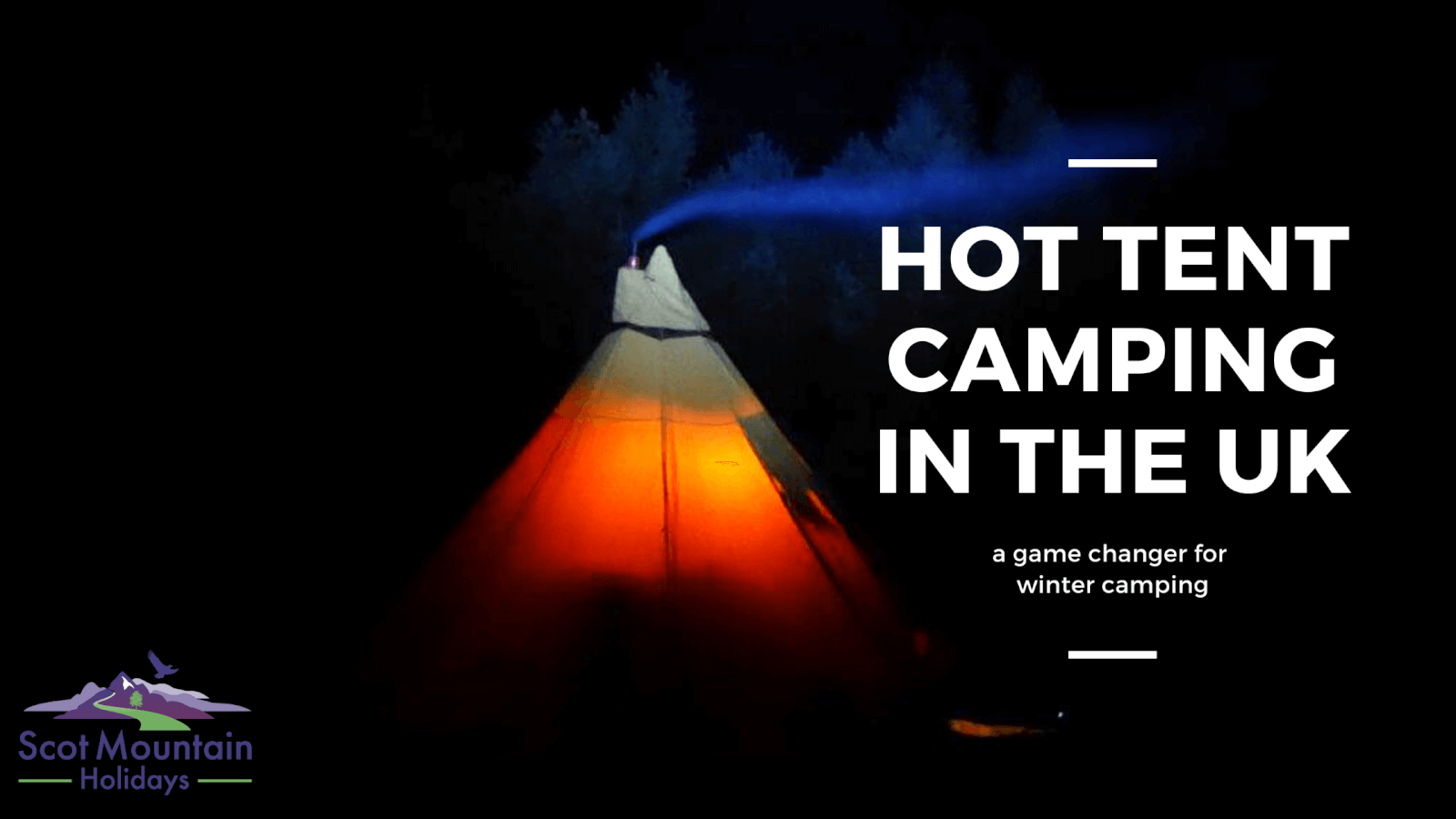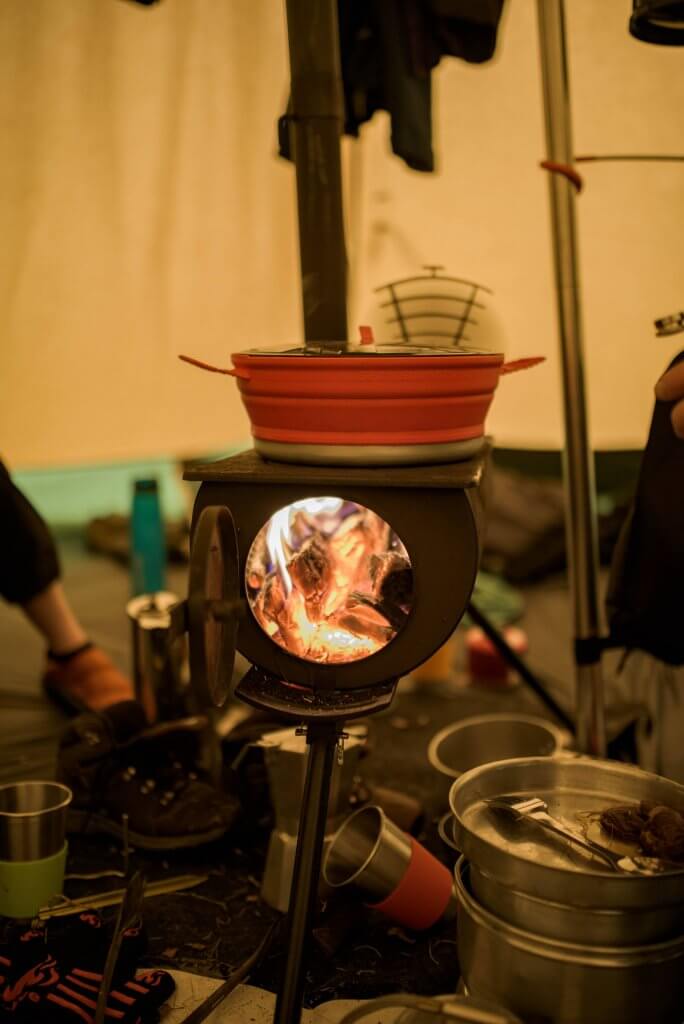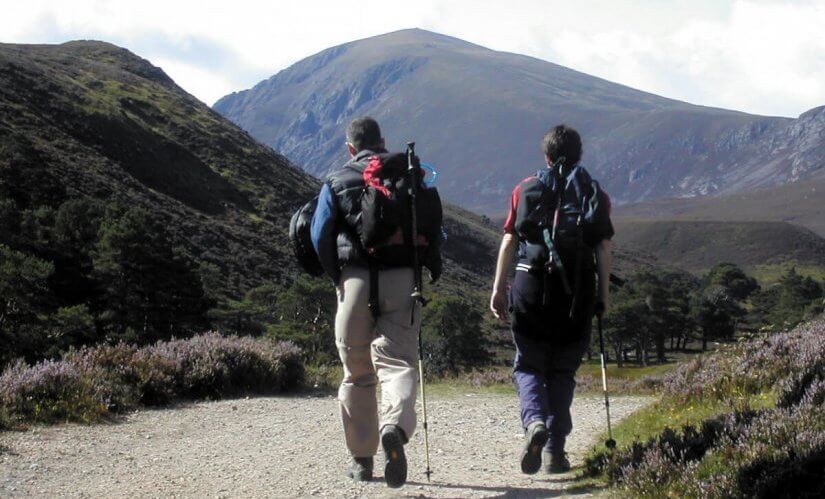Winter camping – a hot tent experience
In fine summer conditions wild camping, in the UK can be a glorious experience. As a youngster, a high wild camp in the mountains was one of the most wholesome, formative and enjoyable experiences of my life, and still is.
For a large chunk of the year though, a wild camp can often end up being an experience that’s endured rather than enjoyed. Along with the sun loosing its summer strength goes its ability to appreciably warm and reduce the humidity of our damp maritime air as it moves inland. By Day 2 of any multi-day trip, that pervasive damp has invariably got into your gear. Worse, if any of your gear gets wet at this time, the only realistic chance of drying it is to wear it!
Without any risk of exaggeration, adding a camp wood burner to your tent is a COMPLETE and UTTER GAME CHANGER! This isn’t something new. The indigenous people of the Arctic have been doing it since time beginning. What is new is the availability of camp wood burners in the UK.
With the stove we use, it’s quite possible, whist having an outside temperature close to freezing, to basking in 25 degrees of heat inside!
With a smaller tent and a larger stove, the Ray Mears boast of 28 degrees C inside whilst the outside temperature is minus 35 degrees becomes entirely believable! (start at 4:30 in if you’re pushed for time).
Banish the damp …
This elevated temperature has the effect of substantially reducing the relative humidity of the air and the prospect of being able to banish that damp.
Combining a camp wood burner with a tent or teepee made of a naturally breathable poly-cotton canvas creates a remarkably dry atmosphere. Even to the point that the upper surface of a ground sheet in contact with cold ground will readily dry!
… dry your gear out
A teepee style tent gives a wonderful drying area in its upper reaches, the apex. It is, of course, the warmest part especially with the flue pipe going straight up through the centre.
In the depths of winter, if you’re able to keep the stove in over night it is quite possible to have dry gear by the morning, and that includes boots! A wood burner raised adequately up off the ground allows boots to be placed under it without drying the leather out too aggressively.
A cosy social around the camp stove…
For us the “après” adventure, the evening meal, etc has always been an important part of the whole experience. The central camp stove provides a wonderfully cosy focal point around which guests can sit, relax and enjoy each others company. Often the only adequate cosy alternative when using conventional camping gear is to cocoon yourself in your sleeping bag.

Finally, a few points to bear in mind…
Deadwood is a very important part of any woodland ecosystem, especially so in nature conservation areas, It’s the food of fungi, larvae, etc that then in turn feed other wildlife species. This should be born in mind when sourcing wood and if necessary fuel should be taken with you. It is also worth bearing in mind that deadwood is the legal property of the landowner.
Depending on the time of year it may be difficult to find dry wood in the wild. As is the case with burning any damp or “green” wood, a lot of heat energy is lost in the form of latent heat evaporating the water rather than it raising the temperature.
Make sure you take extra care to dispose of any ashes and cinders safely. You need to be super careful when wild camping to avoid any risk of starting a wild fire.
If you’d like to try hot tent camping, before investing in all the gear yourself you might want to consider this trip: Hot tent camping with Scot Mountain Holidays
We’re bringing out another trip soon based on the isle of Rum in early April and hot tent camping for the duration. Keep an eye on the website for details.
















